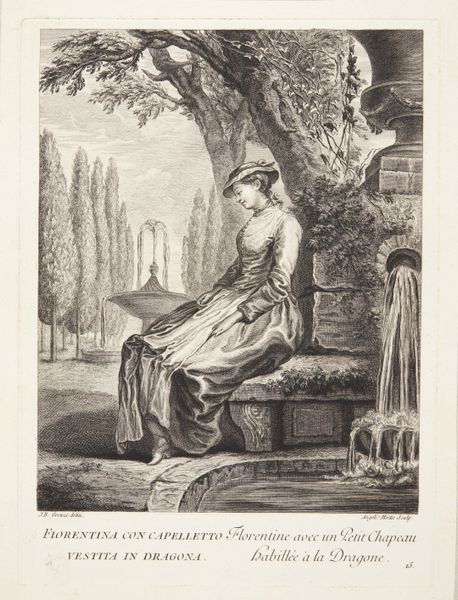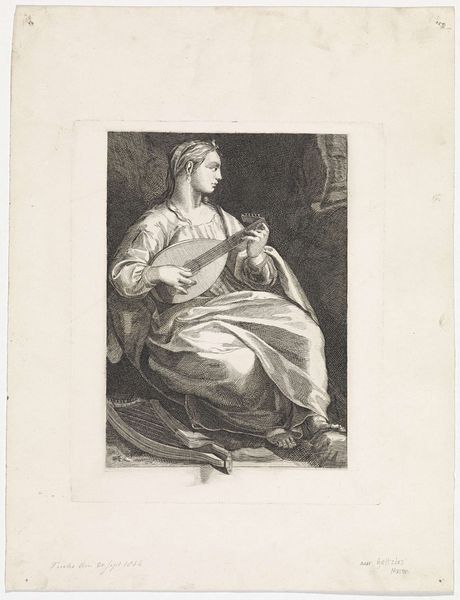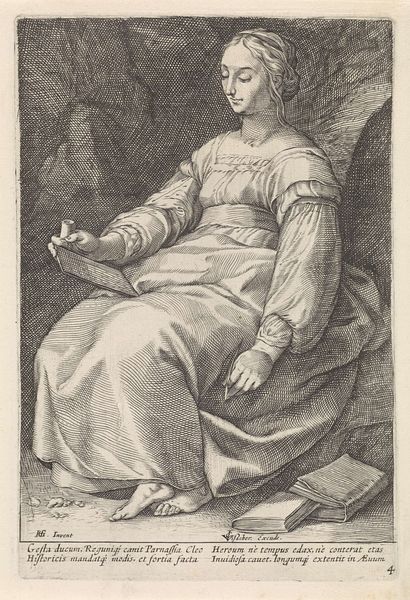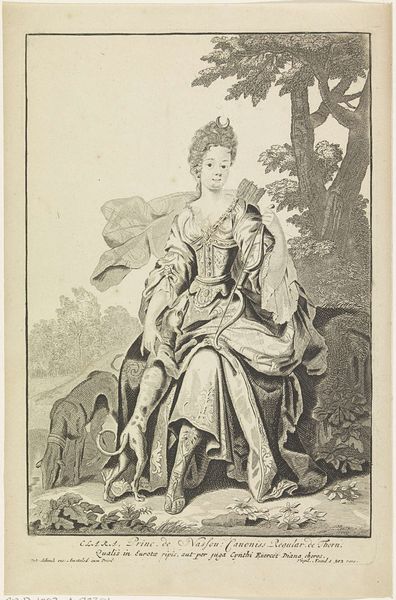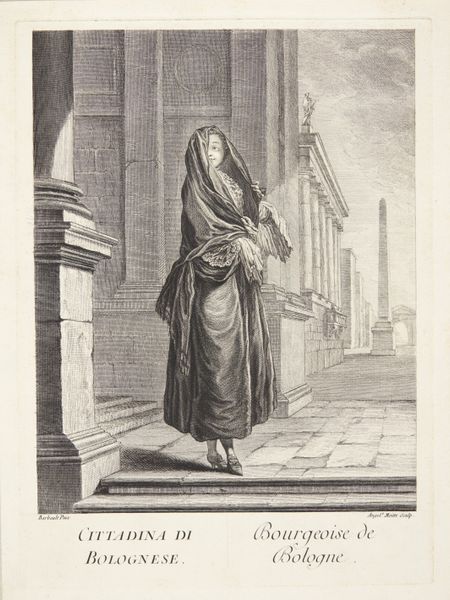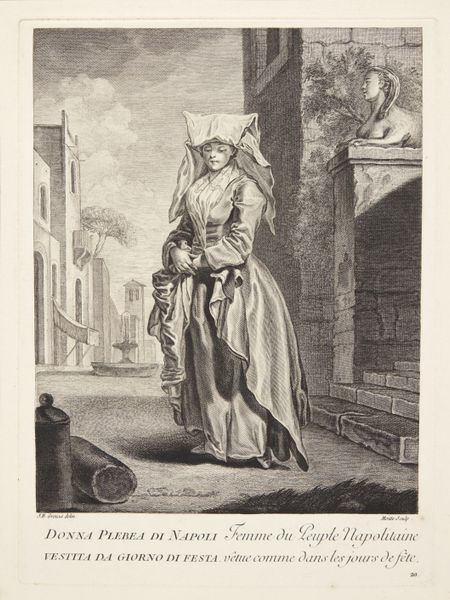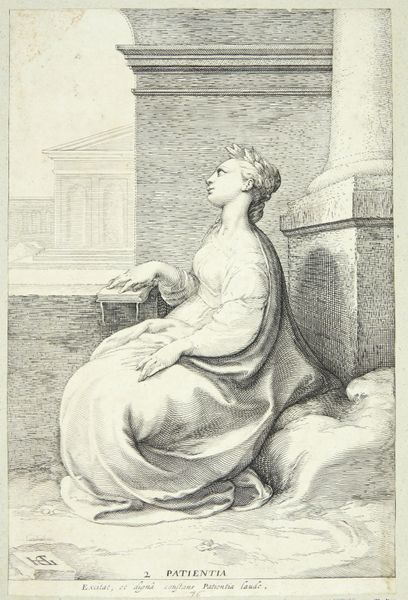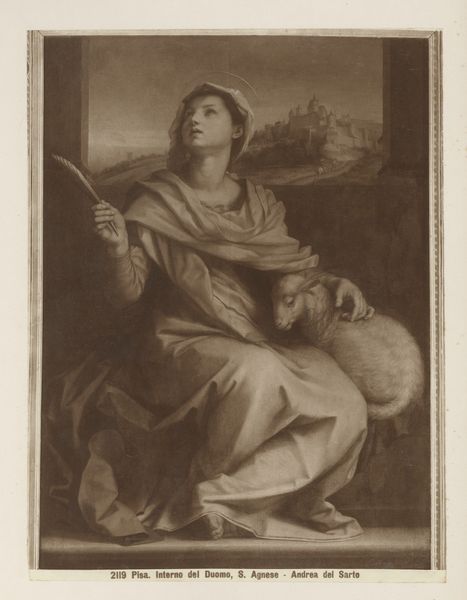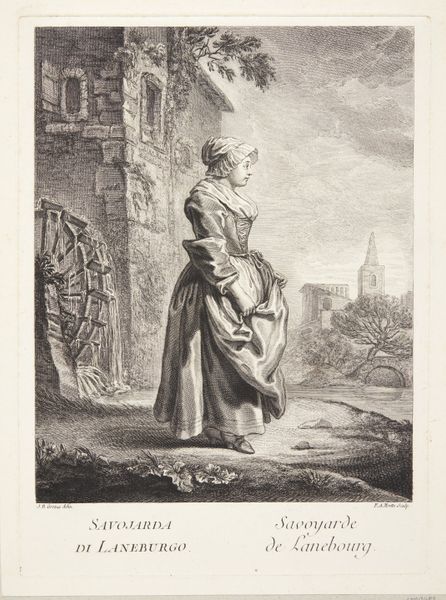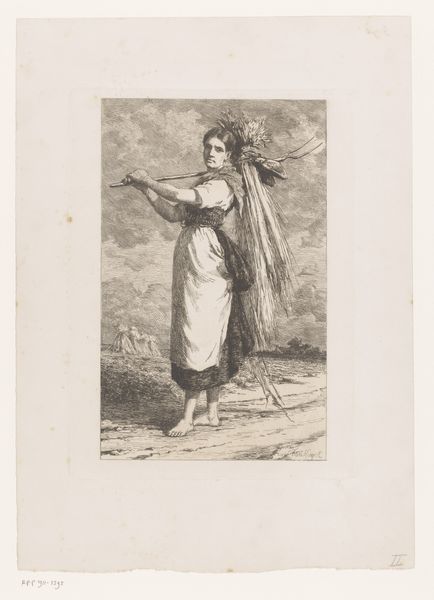
Kvinde fra Genova (Genoise avec de Mezzo rabatti vendant des fleurs) 1760s
0:00
0:00
Dimensions: 306 mm (height) x 225 mm (width) (plademål)
Curator: Let's delve into Pierre Etienne Moitte's "Kvinde fra Genova," or "Genoise avec le Mezzo rabatti vendant des fleurs," an etching from the 1760s. The delicate lines almost vibrate. Editor: My first impression is one of subtle power dynamics. Despite the gentle subject, there’s something incredibly formal and controlled about the composition. Curator: Indeed. We see a flower seller, but not as a romanticized peasant. Her positioning within classical architecture implies certain complexities, challenging simplified narratives around class and labour in this period. Editor: Absolutely. The print medium itself is key here; it's reproducible, meant for a broader consumption, which inherently engages questions of value and accessibility. How was labour viewed, rendered in a commodity form, disseminated via prints? Curator: It's worth considering her clothing as well; it blends somewhat ambiguously into classical draping and hints at the complex status of working women. We need to understand this visual language in light of feminist discourse around representation. Does it empower, objectify, or both? Editor: Exactly, we must look at both the visual and material reality. Think about the physicality of the etching process – the engraver’s labor, the availability of copper plates, and how the production informed the social commentary. What sort of labour and class biases influenced this process and its distribution? Curator: Considering broader baroque sensibilities of staging scenes, is this ‘genre painting’ a truly honest look into a flower seller’s life or more of a performative commentary for a bourgeois audience? Editor: And what does that performance do? How is it different from the performance the flower seller herself puts on? These issues affect consumption today; as viewers, we participate in its continuous meaning and can become active, conscientious consumers of art, thinking about where things come from. Curator: What started off as a simple image, takes us right to some difficult ideas regarding class, social standing, production and representation. I will be taking those points home with me. Editor: And I will never look at an old print in quite the same way. I will keep in mind not just its image but the work and consumption involved.
Comments
No comments
Be the first to comment and join the conversation on the ultimate creative platform.

